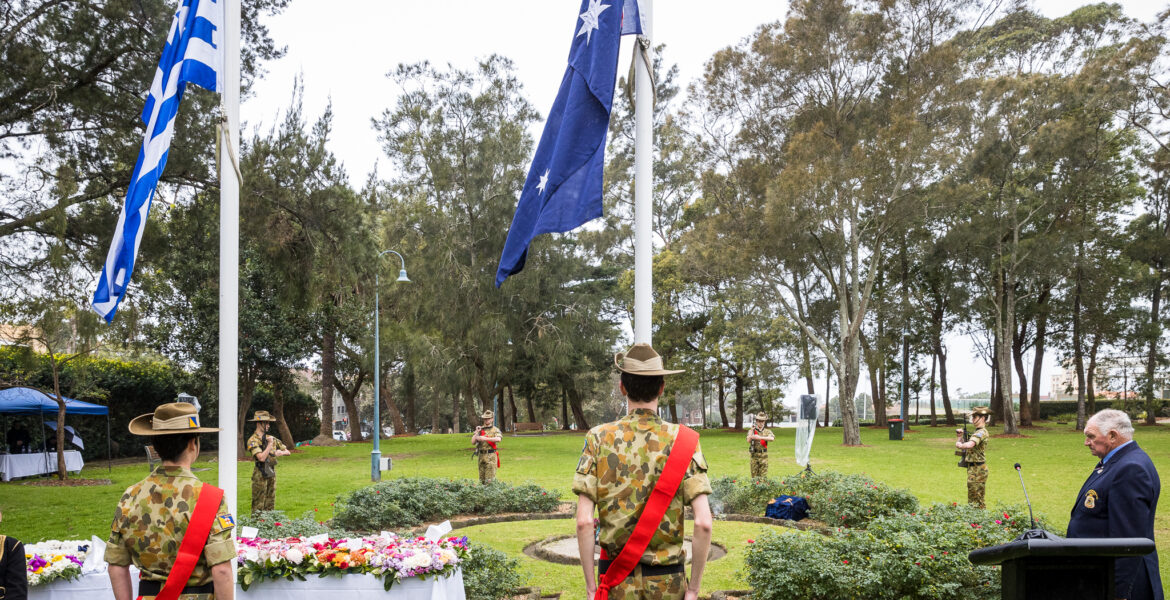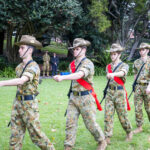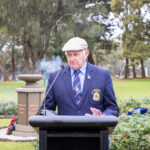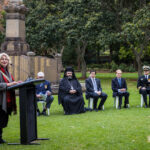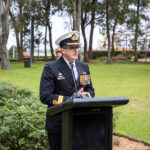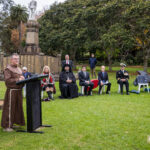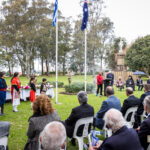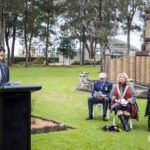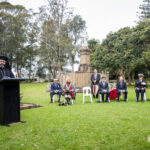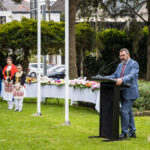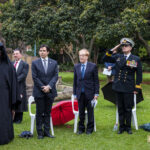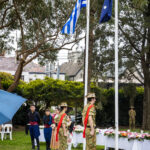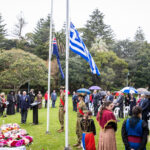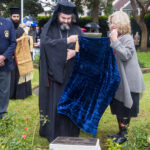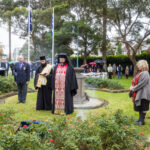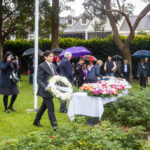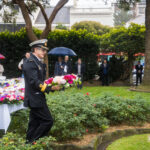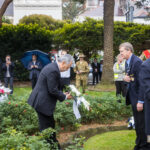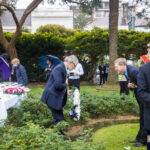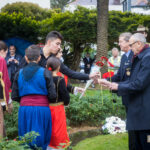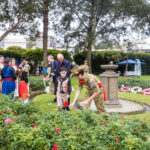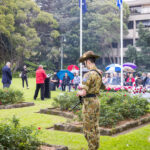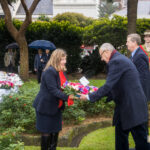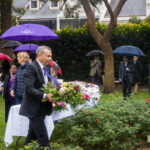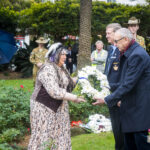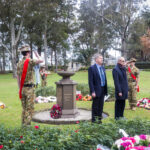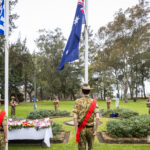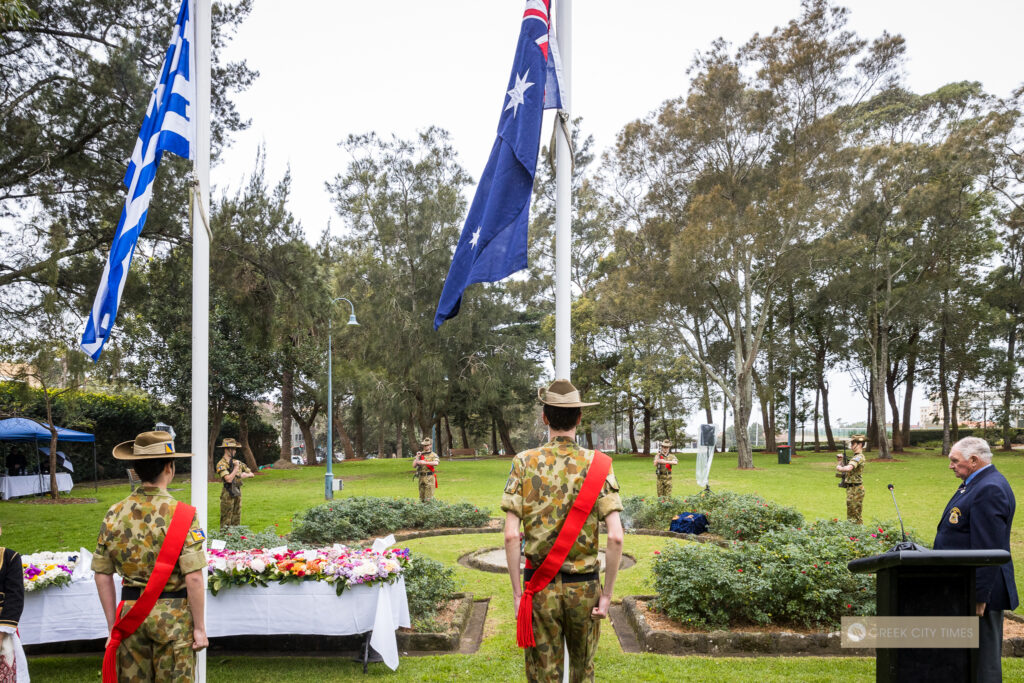
Mayor of Waverley, Paula Masselos, together with Very Rev. Prohoros Anastasiadis, representing His Eminence Archbishop Makarios, unveiled the Council’s new memorial to mark the 80th anniversary of the Battle of Crete.
The ceremony took place on Sunday in the fountain garden next to Waverley Cenotaph in Waverley Park, Bondi Junction.
In attendance was Mr Christos Karras, the Consul General of Greece in Sydney, Mr James Jordon, Chairperson of the Joint Committee for the Commemoration of the anniversary of the Battle of Crete and the Greek Campaign, Commodore John Stavridis from the Australian Navy, Father Bernie Thomas from Mary Immaculate Church, Mr Roger Selby, President of the NSW Association of Jewish Service & Ex-Service Men & Women and Mr Bill Harrigan, President Bondi Junction RSL (MC).
The Welcome to Country and smoking ceremony was lead by Elder Dean Kelly.

Mayor Masselos said the memorial, presented to the people of Waverley, honours the eight Waverley Anzacs who fought in Greece alongside their Greek and British comrades and all Australians who have died in conflicts around the world.
“As a Greek Australian and the first Greek Mayor of Waverley, the Battle of Crete emphasised the courage and resilience of our brave Anzacs, many of whom arrived in Crete with little more than their rifles and the clothes on their backs, battle weary from weeks of fierce fighting that ultimately saw the fall of mainland Greece,” Mayor Masselos said.
The Battle of Crete was one of the most dramatic battles of the Second World War. Over 12 days in May 194, a mixed force of New Zealanders, British, Australian and Greek troops desperately tried to fight off a huge German airborne assault. Despite suffering appalling casualties, the parachutists and glider-borne troops who led the invasion managed to secure a foothold on the island and eventually gained the upper hand. The battle ended with the evacuation to Egypt of the bulk of the Allied force.

Waverley Council worked closely with the Joint Committee for the Battle of Crete and the Greek Campaign to identify the fallen soldiers and design the plaque and plinth.
The eight Waverley Anzacs buried in Greece, listed by age, are:
- Private Ronald Exley Robinson, a salesman from Sir Thomas Mitchell Rd in Bondi. Private Robinson, of the 1st Australian Infantry Battalion, was only 21 when he died defending the island of Crete against the German land and airborne invasion. Son to William and Louisa, of Bondi, Private Robinson is buried at Souda Bay, home to the Hellenic Air Force Base near the village of Mouzouras, 17km east of the city of Hania.
- Signalman Robert Cornwall Bolden, an engraver from Old South Head Road. Signalman Bolden was 22 when he was killed in action. His body was laid to rest at the Phaleron War Cemetery in Athens.
- Private James John Ryan, a welder and blacksmith born in the NSW regional town of Young. Private Ryan was living in Francis Street, Bondi when he enlisted in the Australian Army where he served in the 4th Australian Infantry Battalion. He was killed in action in Florina at age 22. His name is commemorated on the Athens Memorial but he has no-known grave.
- Private Henry MacDonald Butler, a machinist from Waverley. Private Butler was born in North Sydney and served in the 1st Infantry Battalion where he was killed in battle, age 25. He is buried at Souda Bay, along with his fellow Waverley Anzac, Private Robinson.
- Private Edward Roy Monaghan of Bon Accord Avenue in Bondi and Private James Alfred Hudson, both 29, also fought and died in the war in Greece.
- Sargeant Frederick Stafford Smith, of Hastings Parade, Bondi, died age 35 of “accidental causes” and is buried at Phaleron War Cemetery in Athens, where Signalman Bolden was also laid to rest.
- Colonel William Elphinstone Kay, the most senior of our Waverley Anzacs buried in Greece. Colonel Kay was born in Glen Innes in NSW New England region, and lived at 255 Oxford St, Waverley, now part of the Bondi Junction CBD. He held a medical degree from the University of Sydney and prior to his enlistment with the first Australian Imperial Force, served with the 7th Australian Army Medical Corps as a Captain in the Citizens Military Forces. Whilst serving in the 2nd Field Ambulance, Colonel Kay was awarded a Distinguished Service Order in the First World War for “marked ability, zeal and devotion to duty”. Colonel Kay was mortally wounded while bravely organising the evacuation of about 400 wounded and sick men from the 2/5th Australian General Hospital where he served and about 500 British civilians on the yacht Hellas which was attacked by German aircraft. As many as 742 people were killed in this attack. He is buried at Kyffissa Cemetery.
*Images by Nick Bourdaniotis/Bourdo Photography (Copyright)

